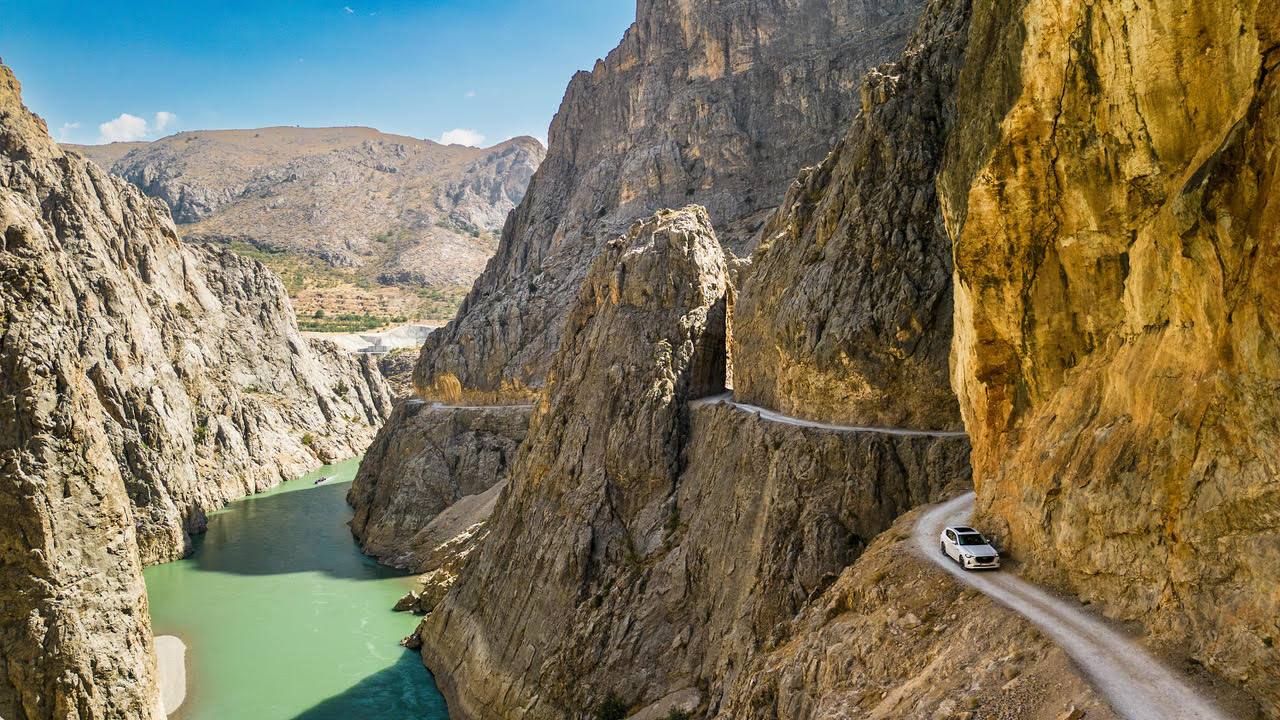The D915
You’ve probably heard of the Autobahn, the world’s fastest highway, but have you heard of the D915? It’s the world’s most dangerous road—and it’s not to be underestimated.
Only experienced drivers, daredevils, or those familiar with the area should travel this road. One wrong move could lead to tragic consequences.
Where is it?
The D915, also known as the Bayburt of Yolu, or Bayburt-Of Road, is located between the Black Sea and the Northeast Anatolia regions of Turkey.
It stretches a whopping 106 kilometers (65 miles) and is known for 38 particularly sharp hairpin turns.
Construction of the road dates back to as early as 1916, and is said to have been built by Russian soldiers.
When is it open?
Due to its challenging terrain, and the fact that it reaches heights of 2,330 m (7,644 ft) above sea level, the road is typically closed between the months of October and June depending on snow levels.
What is the terrain like?

Aside from a little bit of pavement at the beginning and the end, the road is mostly gravel and dirt. Along with narrow stretches, countless winding turns, and dangerous drop-offs, the terrain adds a next-level danger to the mix.
Certain parts of the road, particularly the ones that spiral down cliffs, can be extremely challenging to navigate and can even cause passengers to experience vertigo as a result.
What makes the road so dangerous?
Aside from its challenging terrain, the surrounding land area poses a risk too. The roadways often crumble apart when heavy vehicles drive over it. This causes a serious danger for the roadway below, as well as the vehicle driving.
In addition to the corroding roadway, inclement weather poses a significant risk. Rain can make the route extremely muddy and slippery. Fog can show up unexpectedly and instantly reduce visibility.
Another potential hazard is the fact that most of the road is so narrow that it can only fit one vehicle at a time. If you happen to meet another vehicle coming the opposite direction, one of you better be able to drive effectively in reverse.
What is the most dangerous part?
There is a 66 mile stretch that is known as the most precarious section of the D915. This part is known as the Derebasi Turns. It is comprised of extremely tight and narrow road sections that climb up Mount Soganli in a snake-like manner.
Parts of the mountain can be extremely steep with gradients that sometimes reach 17%.
Who uses this road?
The D915 is popular among extreme cyclist enthusiasts, and tourists looking for an adrenaline rush—even though many have experienced near-misses, or worse.
What makes this road stand out among other dangerous roads, is that this one is actively used by locals. However, the locals are typically seasoned drivers with a long-standing experience driving this road. They know to respect the terrain, and not take any risks.
Are there any safety measures?
Let’s be real here, it wouldn’t be called the Most Dangerous Road in the World if it had safety precautions.
The D915 does not have guardrails, fences, or even warning signs of any kind, at any point along the entire roadway.
Has anyone been hurt?
Not only has the D915 been dubbed The Most Dangerous Road in the World, but it also beats out another dangerous road called Death Road in Bolivia due to its intense terrain.
Given this information, it is safe to assume that accidents do occur on the D915.
Although exact statistics are difficult to find, it has been said that numerous lives have been lost in recent years due to tragic mistakes made while navigating the winding, steep roadway.
Final Thoughts
Although this road may be intriguing to extreme adventurists, it is imperative that only seasoned drivers take the risk of venturing onto the D915.
Due to the very nature of the road, the average tourist is advised against making the trek alone.
Aside from its imminent danger, the D915 offers spectacular views over the surrounding country, with mountains and greenery for miles.
















